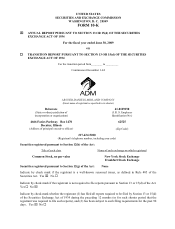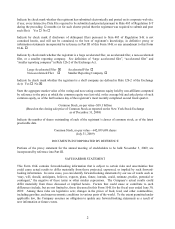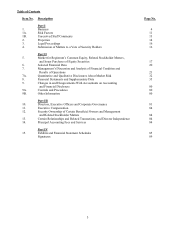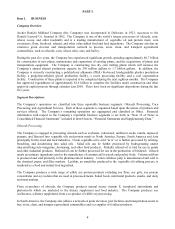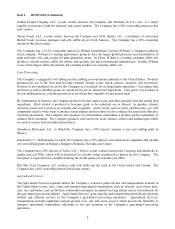Archer Daniels Midland 2009 Annual Report Download - page 17
Download and view the complete annual report
Please find page 17 of the 2009 Archer Daniels Midland annual report below. You can navigate through the pages in the report by either clicking on the pages listed below, or by using the keyword search tool below to find specific information within the annual report.11
Item 1A.
RISK FACTORS
The availability and price of the agricultural commodities and agricultural commodity products the Company
produces and merchandises can be affected by weather, disease, government programs, competition, and
various other factors beyond the Company’s control and could adversely affect the Company’s operating results.
The availability and price of agricultural commodities are subject to wide fluctuations due to factors such as
weather, plantings, government programs and policies, changes in global demand resulting from population growth
and changes in standards of living, and global production of similar and competitive crops. These factors have
historically caused volatility in the agricultural commodities industry and, consequently, in the Company’s
operating results. Reduced supply of agricultural commodities due to weather-related factors or other reasons
could adversely affect the Company’s profitability by increasing the cost of raw materials used in the Company’s
agricultural processing operations. Reduced supplies of agricultural commodities could also limit the Company’s
ability to procure, transport, store, process, and merchandise agricultural commodities in an efficient manner which
could adversely affect the Company’s profitability. In addition, the availability and price of agricultural
commodities can be affected by other factors, such as plant disease, which can result in crop failures and reduced
harvests.
Also, with respect to prices, to the extent production capacity is added within the agricultural processing industry,
the disruption to the balance of supply and demand may result in increased raw material costs and/or downward
pressure on the relevant product selling prices, thereby adversely affecting revenues and operating results.
Fluctuations in energy prices could adversely affect the Company’s operating results.
The Company’s operating costs and the selling prices of certain finished products are sensitive to changes in energy
prices. The Company’s processing plants are powered principally by electricity, natural gas, and coal. The
Company’s transportation operations are dependent upon diesel fuel and other petroleum products. Significant
increases in the cost of these items could adversely affect the Company’s production costs and operating results.
The Company has certain finished products, such as ethanol and biodiesel, which are closely related to, or may be
substituted for, petroleum products. Therefore, the selling prices of ethanol and biodiesel can be impacted by the
selling prices of gasoline and diesel fuel. A significant decrease in the price of gasoline or diesel fuel could result
in a significant decrease in the selling price of the Company’s ethanol and biodiesel and could adversely affect the
Company’s revenues and operating results.
The Company is subject to economic downturns, political instability and other risks of doing business globally
which could adversely affect the Company’s operating results.
The Company conducts its business and has substantial assets located in many countries and geographic areas.
The Company’s operations are principally in the United States and developed countries in Western Europe and
South America, but the Company also operates in, or plans to expand or develop its business in, emerging
market areas such as Asia, Eastern Europe, and Africa. Both developed and emerging market areas are subject to
impacts of economic downturns, including decreased demand for the Company’s products. In addition,
emerging market areas could be subject to more volatile economic, political and market conditions. Economic
downturns and volatile conditions may have a negative impact on the Company’s operating results and ability to
execute its business strategies.


